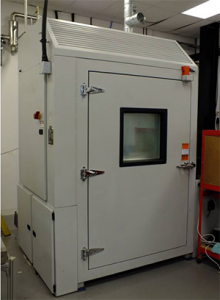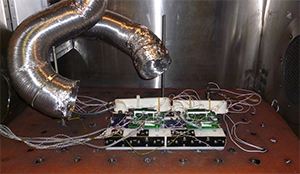HALT is a process used on electronic assemblies and modules to determine weaknesses and the stress limits of a product by temperature cycling and omni-axial random vibration step stress. Inherent weaknesses in a products design and build are stimulated by applying increasing levels of mechanical stress. Within an accelerated timescale, faults in a product can be realised prior to product release and preventing failures occurring during after-sale user operation, very often during the warranty period.
HALT is used as part of a products development, NOT to simulate normal to most extreme operating conditions, but to stimulate a product failure mechanism and to exceed the UUT design limits in order that weaknesses in the products design are identified and can be “designed out”.
HALT Consultancy and Planning
- HALT consultancy and training
- Product analysis
- HALT strategy/plan development
- Product drive and monitor during HALT
The complete HALT process
- Low temperature test – determine the products lowest operating temperature
- High temperature test – determine the products high temperature operating limit
- Rapid temperature cycling – increasing ramp rates within upper and lower temperature limits
- Multi-axis random vibration – increasing level to stimulate failures
- Combined temperature and vibration
- HALT result analysis
- Product design change analysis




